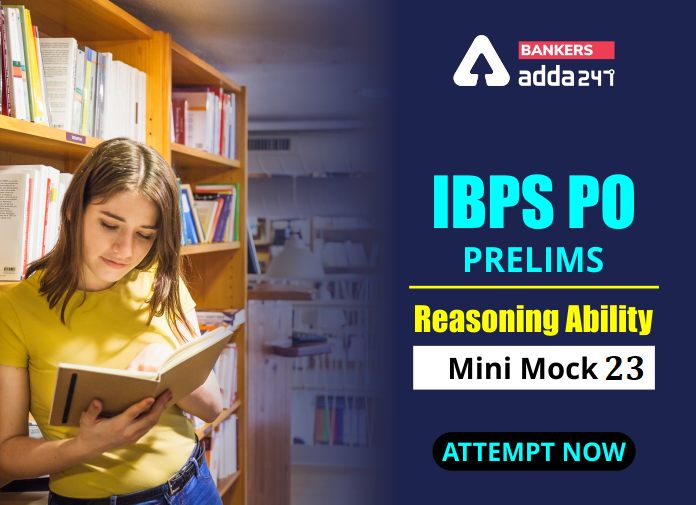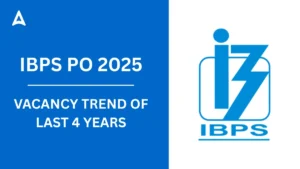Table of Contents
Directions (1-5): In these questions, relationship between different elements is show in the statements. The statements are followed by conclusions. Study the conclusions based on the given statements and select the appropriate answer:
(a) If only conclusion I follows.
(b) If only conclusion II follows.
(c) If either conclusion I or II follows
(d) If neither conclusion I nor II follows.
(e) If both conclusions I and II follow.
Q1. Statements: C≥N≥Y>A<W<B=L>D
Conclusion
I: A<C
II: D>W
Q2. Statements: D≥R=Q≤P≤F>E>I<L>C
Conclusion
I: R<F
II: E>C
Q3. Statements: S≤N≤P>W=K≥I≥G=M
Conclusion
I: W=M
II: M<W
Q4. Statements: Q>X>D=M>K≤L=E<C
Conclusion
I: M<C
II: K<Q
Q5. Statements: G>K>Y≥D<M≤S=T>P≥L
Conclusion
I: D<G
II: S>L
Directions (6-10): In these questions, relationship between different elements is shown in the statements. These statements are followed by two conclusions:
(a) If only conclusion I follows.
(b) If only conclusion II follows.
(c) If either conclusion I or II follows.
(d) If neither conclusion I nor II follows.
(e) If both conclusion I and II follow.
Q6. Statements: A≥Q, U>V=R, A >B≤V, U<S
Conclusion:
I. B<S
II. R<S
Q7. Statements: D≥Q, P>J, O>Q>J, T>D
Conclusion:
I. O>T
II. T>J
Q8. Statements: A≥Q, U>V=R, A >B≤V, U<S
Conclusion:
I. Q≥U
II. U>Q
Q9. Statements: R≥Z, C=B<Z, D≥R>O
Conclusion:
I. D>B
II. O<C
Q10. Statements: Q=B, K<E<B, J≥E, R≤Q
Conclusion:
I. J>K
II. R≤B
Directions (11-15): In these questions, relationship between different elements is show in the statements. The statements are followed by conclusions. Study the conclusions based on the given statements and select the appropriate answer:
(a) If only conclusion I follows.
(b) If only conclusion II follows.
(c) If either conclusion I or II follows
(d) If neither conclusion I nor II follows.
(e) If both conclusions I and II follow.
Q11. Statements: T<N≤P<O>R>Z=V≥I
Conclusion
I: O>V
II: I<P
Q12. Statements: M<P≤C >I=G>Y=D>W
Conclusion
I: M>Y
II: M≤Y
Q13. Statements: Z>S≥C>N =R>K<T=E>Y
Conclusion
I: N=E
II: Z>K
Q14. Statements: A≤P=T≤U≥L>C=K>S≥V
Conclusion
I: U≥A
II: V<U
Q15. Statements: T>W≤N=Z>D≥I>O≥K=J
Conclusion
I: J<O
II: N≥I
Practice More Questions of Reasoning for Competitive Exams:
Solutions
Solutions (1-5):
S1. Ans(a)
Sol. I: A<C(True) II: D>W(False)
S2. Ans(d)
Sol. I: R<F(False) II: E>C (False)
S3. Ans(c)
Sol. I: W=M (False) II: M<W (False)
S4. Ans(b)
Sol. I: M<C (False) II: K<Q (True)
S5. Ans(e)
Sol. I: D<G (True) II: S>L (True)
Solutions (6-10):
S6. Ans.(e)
Sol. I. B<S (True) II. R<S (True)
S7. Ans.(b)
Sol. I. O>T (False) II. T>J (True)
S8. Ans.(c)
Sol. I. Q≥U (False) II. U>Q (False)
S9. Ans.(a)
Sol. I. D>B (True) II. O<C (False)
S10. Ans.(e)
Sol. I. J>K (True) II. R≤B (True)
Solutions (11-15):
S11. Ans.(a)
Sol. I: O>V (True) II: I<P (False)
S12. Ans.(c)
Sol. I: M>Y (False) II: M≤Y (False)
S13. Ans.(b)
Sol. I: N=E (False) II: Z>K (True)
S14. Ans.(e)
Sol. I: U≥A (True) II: V<U (True)
S15. Ans.(d)
Sol. I: J<O (False) II: N≥I (False)
Download PDF of this Reasoning Quiz for IBPS PO 2020
Practice with Crash Course and Online Test Series for IBPS PO Prelims:




 GA Capsule for SBI Clerk Mains 2025, Dow...
GA Capsule for SBI Clerk Mains 2025, Dow...
 The Hindu Review October 2022: Download ...
The Hindu Review October 2022: Download ...
 IBPS PO Vacancy Trend of Last 4 Years
IBPS PO Vacancy Trend of Last 4 Years





